

| Elvis is dead.
Elvis is alive. Laura Schlessinger is a woolly mammoth. |
De ~De Wl |
Dx: x is dead Wx: x is a wooly Mammoth e: Elvis l: Laura Schlessinger |
| Rule 5. Indirect Proof (Indicated by "IP") (This
rule has two parts) Part One: Whenever you write a show line for any formula, you can write the exact negation of that formula, provided that it is the very next thing you write. (Indicate by writing AIP on that line) Part Two: If any formula and its negation both appear as available lines in a derivation without an uncancelled "show" between them, then the closest "show" that is above them both may be cancelled, and a box may be drawn around the closest one and any other lines there may be between it and that show line. If the relevant show line is line #1, then the derivation is successfully finished. (Put IP by the "show") (The first six rules are conveniently listed on Logic Rules Sheet One) |




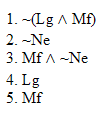
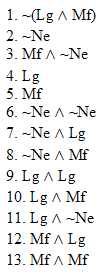


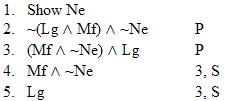
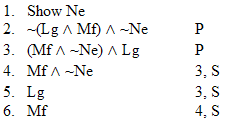
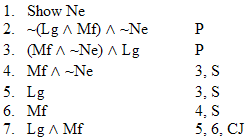
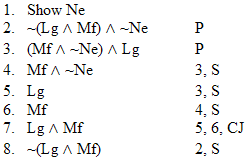
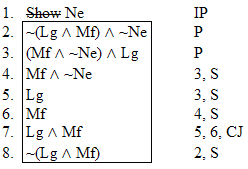

|

|
|
Practice 7. Use your own paper or the answer sheet at practice. For each of the following arguments, determine whether it is valid or invalid. If it's valid prove it valid by DERIVATION. If it's invalid prove it invalid by venn diagram or truth table.
(Try doing AIP as your first line.)
|
